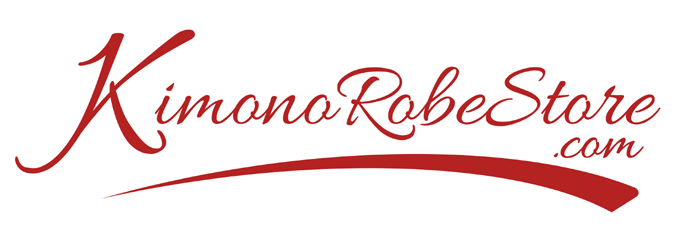Operating and Shipping out of
Easton PA 18042, USA
Women's Kimono Undergarments
These Women's Kimono Undergarments are a must for comfort, for protecting the precious fabric of your Japanese kimono, such as from sweat, and for that extra boost in confidence when wearing this very special Asian clothing. Authentic from Japan, you will delight to find only here on KimonoRobeStore.com the best Han-Juban and Susoyoke to wear like an undershirt and underskirt for your kimono to the collars and belts for ensuring the perfect look and fit of your Japanese kimono or yukata.
What to Wear Under a Kimono and Yukata?
Kimono undergarments serve various purposes – from protecting the precious fabric of your kimono and yukata from the ungainly sweat, moisture, and odor of the body to supporting the slippery fabric of a silk kimono and finishing the look of your kimono or yukata with layers of beautiful colors and designs. The following are the basic types of garments to wear under a kimono and yukata:
Kimono Bust and Torso Shaper
Creases and wrinkles are a big no-no when wearing the Japanese kimono or yukata – much more when wearing them on formal occasions or with a formal look. Enhancing the body's shape, therefore, with proper bust support and torso shaping that will hide the body's natural curves is the first step to getting the right fit of your kimono or yukata.
Juban, Susoyoke, or Suteteko
Your kimono and yukata's protection from dirt, stains, and moisture, especially sweat from the body's back, armpits, and the back of the legs, essentially comes from using the three (3) basic kimono undergarments, i.e., the juban or under-robe, the skirt-like susoyoke, and underpants called suteteko.
The three (3) types of juban or kimono underrobe are the following:
Choosing the right juban is highly important as it kimono undergarment enhances the comfort, breathability, and overall look of your kimono. Pick the juban that suits your kimono's type, color, and design and that suits the occasion or season you wear your kimono. While originally not used with yukata, the juban, susoyoke, and suteteko may also be worn as yukata undergarments, like when wearing a yukata that is made of a semi-transparent fabric.
Kimono Undergarments Accessories
Your kimono undergarments and yukata undergarments, like the juban, may also need a himo, which is a long and narrow sash that helps to secure a kimono undergarment or yukata undergarment around the waist. Certain types of undergarments have also made accessorizing the kimono and yukata more easily, like the han-eri or decorative collar, which is sewn to the juban's collar, and the eri sugata, which is a detachable collar that is used to give the kimono a layered look.
Once you have found the right undergarments for your kimono and yukata, looking great in your kimono or yukata will just be a few steps away. To prepare yourself for wearing the Japanese kimono, start by wearing the Japanese tabi, followed by the kimono underclothing, and then the kimono. Traditionally, this technique of wearing the kimono and kimono undergarments is passed on from mother to daughter; today, there are also schools that teach this. Currently, we also have a great supply of Asian hair accessories and the perfect Japanese zori or geta to complete your kimono and yukata ensemble. Look good and feel great in your Japanese kimono and Japanese yukata.





